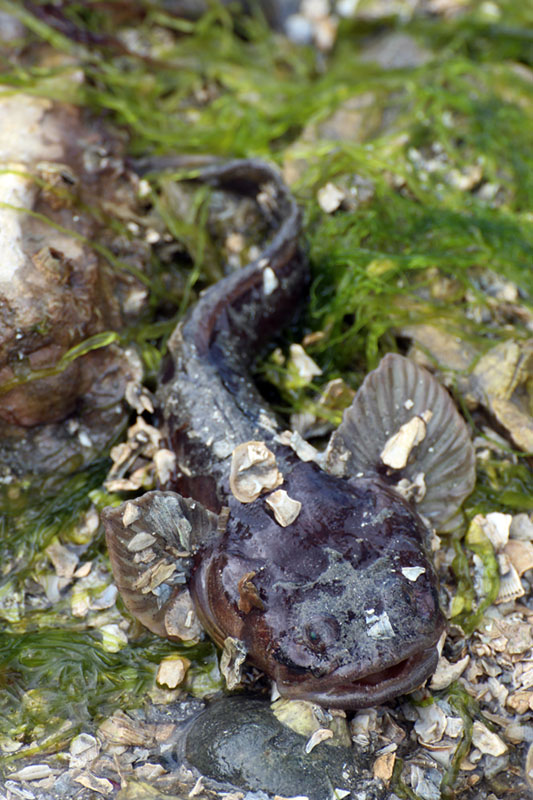Habitat & geography
Porichthys notatus, more commonly known as a midshipman fish, are found in the Eastern Pacific (Eschmyer et al., 1983). They are a subtropical, marine fish; with territory ranges along most of the eastern coast of North America. There are two distinct populations; from Oregon to southern Alaska, and from mid California down to and on either side of the Baja California peninsula. Other organisms that can be found in its habitat include: albacore tuna, chinook salmon, halibut, It was found off the coast of Australia in South Wales once as well (Hoese, 2006) and was labeled as an “introduced species.”
Porichthys notatus can dive to up to 366 meters (about 1200 hundred feet) (Eschmyer et all., 1983) and lives in these deeper waters. Juveniles will remain in this deeper water until they are old enough to reproduce. At nights, the midshipman will come up to feed on small fish, crabs and other crustaceans (Eschmeyer, 1983). One hypothesis states that Porichthys notatus uses its bioluminescent photophores as an aid for feeding. There are two trains of thought to how it works. One is that the photophores work as a camouflage, allowing the fish to approach its prey that are also bioluminescent. Second, it is used as a way to attract unsuspecting prey to itself. During the mating season, it will migrate into the shallows where they populate the muddy and sandy bottoms in the intertidal zone.
These fish prefer rocks and seaweed for cover and concealment inside the zone. Unfortunately for the Porichthys notatus, this makes it an easier target for some predators including bald eagles and herons. When the tides roll out rapidly, it is not uncommon that the Porichthys notatus can be caught out of water. Fortunately for the midshipman fish, they have the ability to breathe air outside of water. However, this makes them even easier targets for scavenging animals like the northwestern crow, and other land animals. During mating season, it will begin calling at night, using hum to attract a mate. There is also debate that it uses its bioluminescence to attract a mate (Colosi, 2011).
The Type I males will build a nest for itself in the intertidal zone. Other marine animals that Porichthys notatus has to worry about in its habitat are seals and sea lions (Eschmeyer et al., 1983). Its ability to bio illuminate has actually proven helpful in avoiding predation; “counterillumination” is the fish’s form of bioluminescent defense. In dim light conditions, the illumination given off by the photophores has a unique ability of being able to match the lighting around it. In doing so, the photophores will blend in the shadow that the fish makes while it swims, rendering it nearly or completely invisible. This in turn works as a type of camouflage disguising the fish from predators that use sight as a main sense for hunting (Colosi, 2013).
Click
here to return to the Phylogeny page
Click
here to go to the Nurtition & Physiology page

